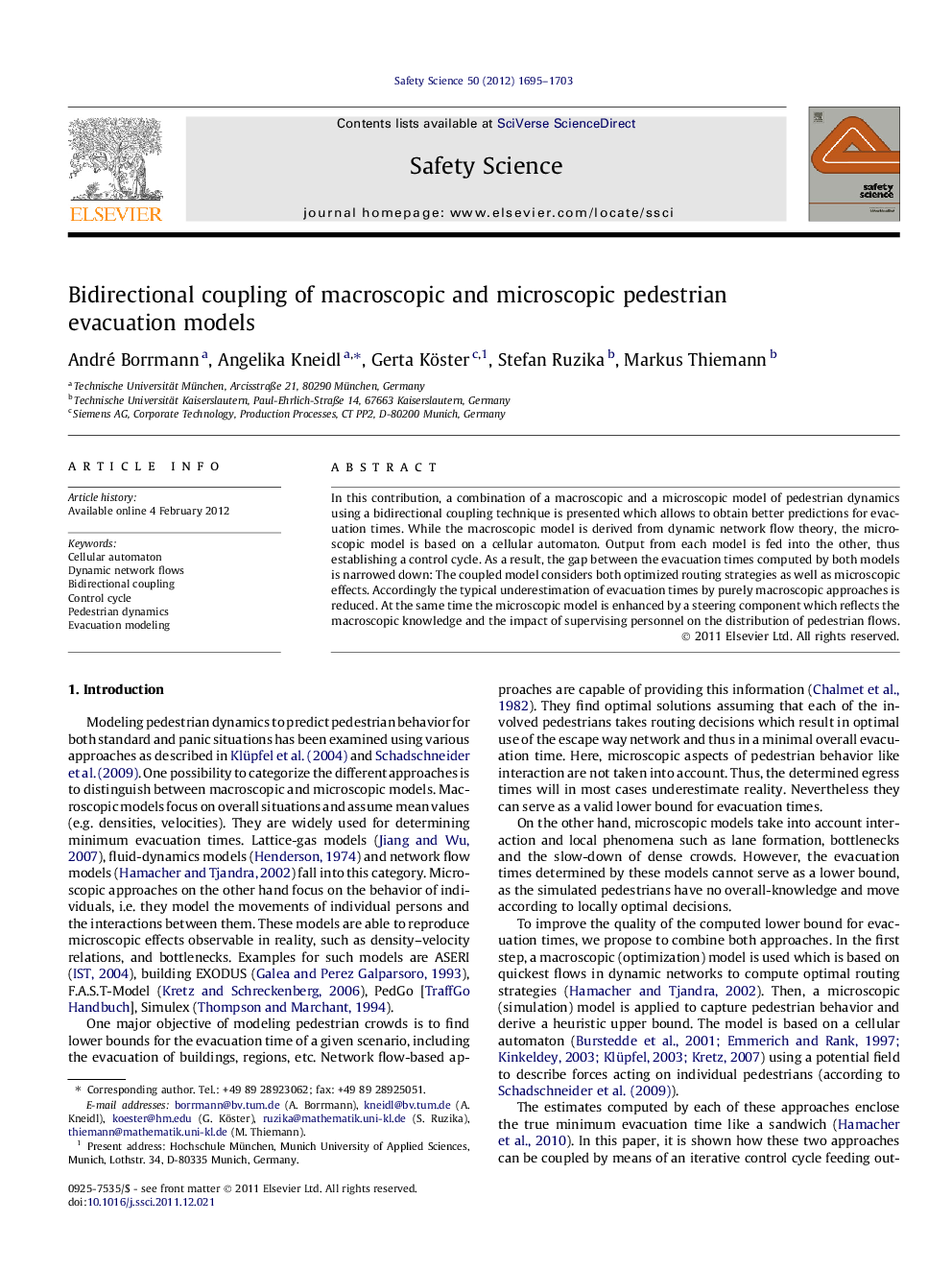| Article ID | Journal | Published Year | Pages | File Type |
|---|---|---|---|---|
| 589152 | Safety Science | 2012 | 9 Pages |
In this contribution, a combination of a macroscopic and a microscopic model of pedestrian dynamics using a bidirectional coupling technique is presented which allows to obtain better predictions for evacuation times. While the macroscopic model is derived from dynamic network flow theory, the microscopic model is based on a cellular automaton. Output from each model is fed into the other, thus establishing a control cycle. As a result, the gap between the evacuation times computed by both models is narrowed down: The coupled model considers both optimized routing strategies as well as microscopic effects. Accordingly the typical underestimation of evacuation times by purely macroscopic approaches is reduced. At the same time the microscopic model is enhanced by a steering component which reflects the macroscopic knowledge and the impact of supervising personnel on the distribution of pedestrian flows.
